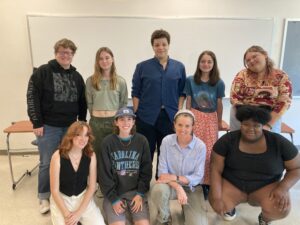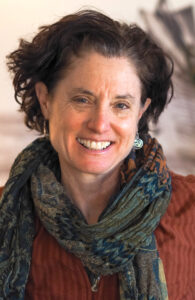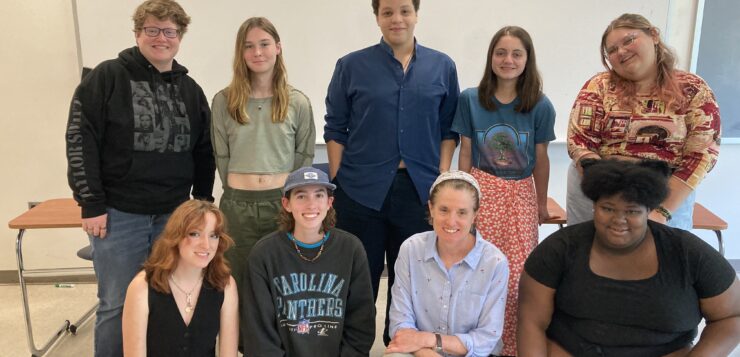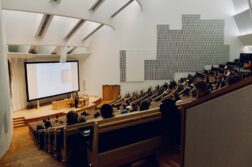
During the first year of the pandemic, I devised and taught a first-year college seminar: Queer Arts/Queer Activism, combining my passion for art, social justice, and queer history. After years of struggling to make sense of my own identity, I finally felt comfortable enough and had the confidence to lead discussions on queer representation in art.
Although I didn’t discover my own queerness until I was in my twenties, and didn’t know much about queer history until much later, on Zoom I was able to lead a discussion about two transgender activists who were on the frontlines of the Stonewall Riots: Sylvia Rivera, who was Latina, and Marsha P. Johnson, who was Black. This was a time when gay or gender non-conforming people faced the possibility of arrest, even in New York City. Students watched a documentary about Harvey Milk, who most knew nothing about. One student responded to the film: “I’ve never heard of him, and I’m so upset that I hadn’t. He was inclusive, caring, smart, and altogether seemed like a great person to have in a position of power.”
Back in Brooklyn, in 1994, the first year I taught as an adjunct professor of English Composition, my students grunted about having to be forced to read Larry Kramer’s The Normal Heart— the story of a writer and his community coming together to expose the burgeoning AIDS crisis— a book I was required to teach. A handful of students claimed homosexuality was not natural; others said they’d think about killing themselves if they had the virus. At the time, I struggled to come out. Hearing these comments made me retreat even more. I asked students how they’d feel if they had a professor who was gay. A female student said, “I’d feel weird when she looked at me.” How was I to deal with these comments as a closeted lesbian?
A friend suggested I invite a speaker. I went through the Gay Men’s Health Crisis— America’s oldest AIDS organization— and shortly after, a tall white man with a Picasso mustache sat in our circle and introduced himself: “My name is David, I’m 34, gay, and I have AIDS.” He talked about how he dated women in high school, but realized he was gay by the time he was twenty. He asked students to ask him anything. The first question: “Why are you gay?”
David, without missing a beat, asked, “Why are you straight?”
By the end of the session, the student shook David’s hand, thanked him for sharing his story, and said he had a lot to think about.
Over the years, it’s gotten easier. In fact, this past year, for the first time in many years, I taught an English Composition course again. To my surprise, half of my students wrote about their queer and trans identities. What a difference a few decades can make! According to several recent polls, 20% to 40% of Gen Z identity as queer.
Even in this time when LGBTQ people can get married, when we have a plethora of positive queer role models, subtle and not-so-subtle messages about conforming to the status quo remain loud and clear. My students, rightfully, are frightened by the conservative backlash: the banning of drag in Tennessee; the “Don’t Say Gay Bill”; the banning of queer books. According to the Human Rights Campaign, the largest LGBTQ political lobbying organization within the United States, there are over 520 anti-LGBTQ+ bills have been introduced in state legislatures, which is a a record; over 220 bills specifically target transgender and non-binary people, also a record; and a record seventy anti-LGBTQ laws have been enacted so far this year.
In the Queer Arts/Queer Activism class I taught, we talked about ACT UP, an activist group started in the 1980s to address the AIDS crisis. I embarked on my first lesbian relationship at this time when gay bashing was a common occurrence. One student asked if I was involved with the activist organization.
“I was closeted,” I said. “Too scared to come out. I attended a couple of ACT UP meetings and felt the sizzling energy in Cooper Union’s Great Hall. I cheered from the sidelines at ACT UP protests and Pride parades.” I also mentioned that I volunteered as a “buddy,” an advocate for people with AIDS, through the Gay Men’s Health Crisis.
My students knew of graffiti artist Keith Haring’s drawings and murals, but didn’t know he was gay, and died of AIDS. They knew of Emily Dickinson but had no idea she wrote hundreds of letters to Susan Gilbert. Biographers believe Gilbert was the love of her life. There is evidence that editors erased Susan’s name, deleted lines, and changed pronouns from “she” to “he”; the letters that Susan wrote back to Emily were destroyed.
Two months into the semester, I arranged for an in-person hike with my students, and my dog. I felt nervous, as if I were just about to meet an online date after Zooming for two months. What should I wear? Would I be the confident professor in person? At least I’d have my dog as a buffer. I arrived at the meeting spot and eventually saw a gaggle of students in masks walk towards me. Students jockeyed to walk by my side. They told me about their classes, their families, how they missed their pets. At the top of the mountain, we sat in a circle. My dog moved from student to student, licking their hands and faces, as if she sensed they all could use dog therapy. I asked them what they looked forward to. They said: going to parties, traveling, seeing their grandparents, and not feeling anxious about their friends and family dying from COVID.
On the last day of class, I showed students my Silence=Death T-shirt, bought from an ACT UP booth at a West Village Street festival in 1988, still in perfect condition; I wore it once to an 80’s dance party. “Teaching this class,” I said, “helped clear away old bones in my closet.”
I continue to release my own valves, to embrace my queerness, to slough off the pain of hiding in that dark and lonely place, and I wish others struggling with their identity are, eventually, able to do the same.
 Lori Horvitz’ first collection of memoir-essays, The Girls of Usually, won the 2016 Gold Medal IPPY Book Award in Autobiography/Memoir. Her creative nonfiction has appeared in a variety of journals including Hobart, South Dakota Review, The New York Times, The Guardian, and Hotel Amerika. Professor of English at UNC Asheville, Horvitz has been awarded fellowships from Yaddo, Cottages at Hedgebrook, VCCA, Ragdale, Blue Mountain Center, and Brush Creek. She holds a Ph.D. in English from SUNY Albany, and an MFA in Creative Writing from Brooklyn College. In a starred review from Kirkus, the critic calls Lori’s latest book, Collect Call to My Mother: Essays on Love, Grief, and Getting a Good Night’s Sleep: “A scintillating collection, full of subtle wit and passionate yearning.”
Lori Horvitz’ first collection of memoir-essays, The Girls of Usually, won the 2016 Gold Medal IPPY Book Award in Autobiography/Memoir. Her creative nonfiction has appeared in a variety of journals including Hobart, South Dakota Review, The New York Times, The Guardian, and Hotel Amerika. Professor of English at UNC Asheville, Horvitz has been awarded fellowships from Yaddo, Cottages at Hedgebrook, VCCA, Ragdale, Blue Mountain Center, and Brush Creek. She holds a Ph.D. in English from SUNY Albany, and an MFA in Creative Writing from Brooklyn College. In a starred review from Kirkus, the critic calls Lori’s latest book, Collect Call to My Mother: Essays on Love, Grief, and Getting a Good Night’s Sleep: “A scintillating collection, full of subtle wit and passionate yearning.”




